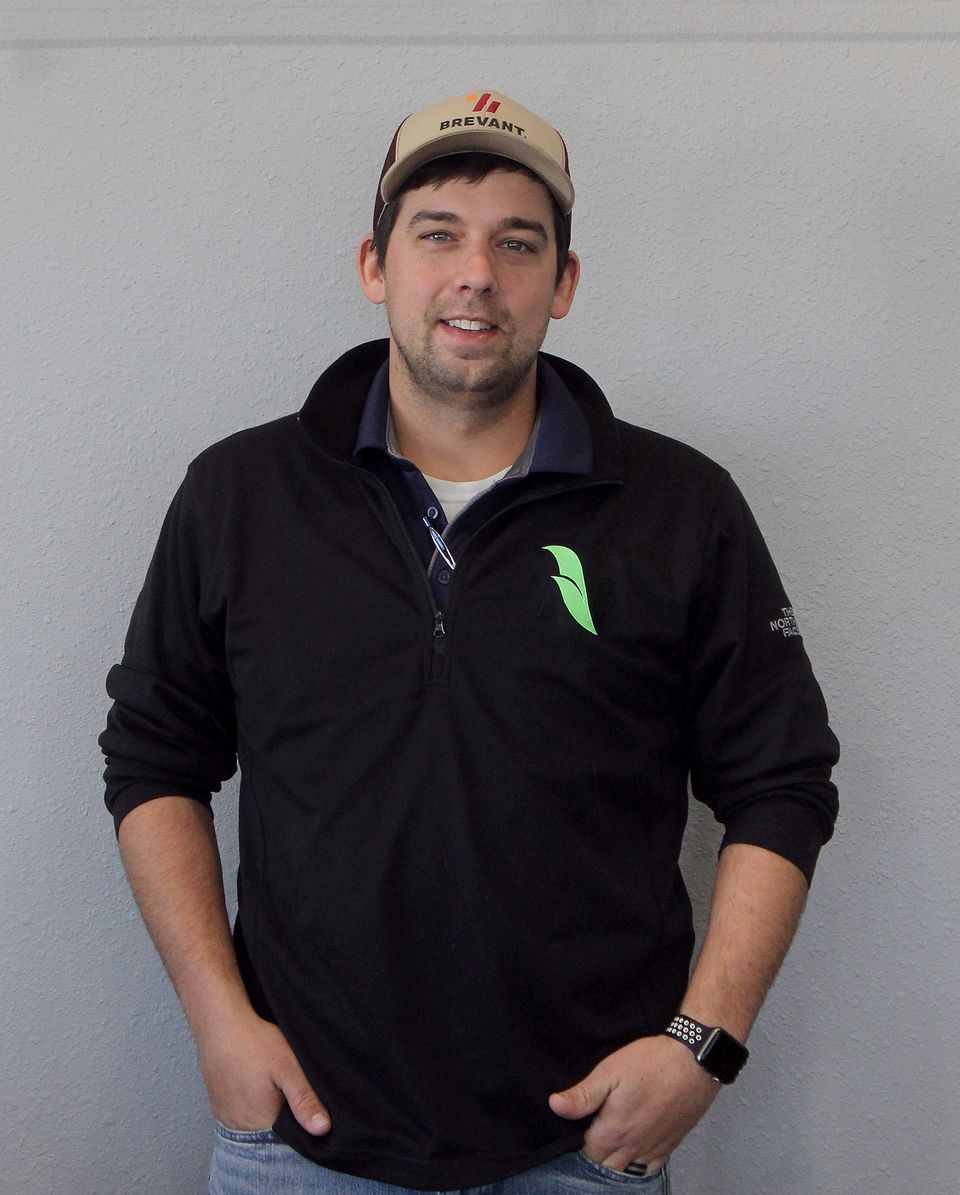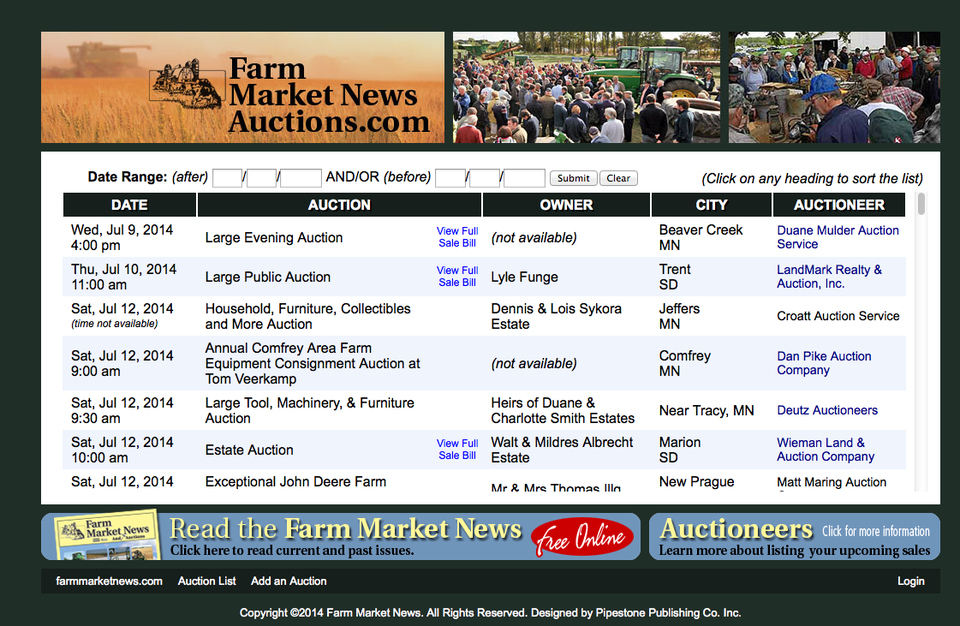As harvest ends, planning begins

Kyle Kuphal | Staff reporter
kkuphal@pipestonestar.com
The 2025 harvest is winding down and it’s time to plan for next year’s crop.
Jon Risacher, a crop consultant with Nutrien Ag Solutions in Pipestone, helps farmers do just that. The goal, he said, is to maximize the number of bushels through management practices. That includes looking at fertility, seed, plant health, disease, insects, what worked and what didn’t, and more. He said it all comes down to management.
“You’ve got to be a good manager to be successful,” Risacher said.
Risacher, who also grows corn, soybeans, alfalfa and oats, said planning for the next year starts during the harvest when farmers are out in their fields looking at factors such as weed pressure. He said weeds were a challenge this year, specifically water hemp.
“The weeds take your fertility,” Risacher said. “They take your moisture, they rob from your crop, so if you don’t get them under control you’re going to give up bushels, and it was kind of prevalent this year. In corn we saw some pretty big reductions and definitely in beans. It just choked the beans out.”
Risacher said there were also disease issues with corn this year. He said tar spot was expected to be more prominent, but it turned out that southern rust was the bigger problem.
“I would say between the disease and water hemp, those are going to be our two biggest conversations this year,” Risacher said.
Pests were not as big of an issue this year. Risacher said there were pockets of aphids, but not as extreme as it’s been in other years, and root worms were not as much of a problem as they were a couple years ago. He recommended farmers to keep an eye out for them, however.
Choosing the right seed varieties and hybrids can help with some of these issues and is a major consideration when planning.
“Seed is always the most emotional because that’s the first thing you truly do,” Risacher said. “Yes, fertilizer, but there’s still fertility in the ground. Seed, you’ve got to get it into the ground and get it out of the ground, and you’ve got to wait six months before you know what you did right or wrong.”
For perspective, he said that in a lifetime a farmer might get just 40 chances to decide what seed to use.
Soil sampling is another practice farmers might implement to prepare for the next growing season. It can measure things like nitrogen, phosphorus, potassium, sulfur, zinc, boron and iron. Risacher said that’s typically done every four years or so.
He said marketing is also a factor, and plays a bigger role than it used to.
In general, farming is a risk and the goal is to manage the risk.
“Make a plan and adjust, would be my biggest preach to anybody,” Risacher said. “And don’t be afraid to adjust. You have to adapt because things can change.”
He also encouraged farmers to consider their budget when making management decisions and not to be afraid to ask questions.
“I would say work with somebody that you’re comfortable with and that you trust, and find the right questions that you want to ask,” Risacher said. “I personally write a lot of notes on little things. I write sticky notes everywhere.”
kkuphal@pipestonestar.com
The 2025 harvest is winding down and it’s time to plan for next year’s crop.
Jon Risacher, a crop consultant with Nutrien Ag Solutions in Pipestone, helps farmers do just that. The goal, he said, is to maximize the number of bushels through management practices. That includes looking at fertility, seed, plant health, disease, insects, what worked and what didn’t, and more. He said it all comes down to management.
“You’ve got to be a good manager to be successful,” Risacher said.
Risacher, who also grows corn, soybeans, alfalfa and oats, said planning for the next year starts during the harvest when farmers are out in their fields looking at factors such as weed pressure. He said weeds were a challenge this year, specifically water hemp.
“The weeds take your fertility,” Risacher said. “They take your moisture, they rob from your crop, so if you don’t get them under control you’re going to give up bushels, and it was kind of prevalent this year. In corn we saw some pretty big reductions and definitely in beans. It just choked the beans out.”
Risacher said there were also disease issues with corn this year. He said tar spot was expected to be more prominent, but it turned out that southern rust was the bigger problem.
“I would say between the disease and water hemp, those are going to be our two biggest conversations this year,” Risacher said.
Pests were not as big of an issue this year. Risacher said there were pockets of aphids, but not as extreme as it’s been in other years, and root worms were not as much of a problem as they were a couple years ago. He recommended farmers to keep an eye out for them, however.
Choosing the right seed varieties and hybrids can help with some of these issues and is a major consideration when planning.
“Seed is always the most emotional because that’s the first thing you truly do,” Risacher said. “Yes, fertilizer, but there’s still fertility in the ground. Seed, you’ve got to get it into the ground and get it out of the ground, and you’ve got to wait six months before you know what you did right or wrong.”
For perspective, he said that in a lifetime a farmer might get just 40 chances to decide what seed to use.
Soil sampling is another practice farmers might implement to prepare for the next growing season. It can measure things like nitrogen, phosphorus, potassium, sulfur, zinc, boron and iron. Risacher said that’s typically done every four years or so.
He said marketing is also a factor, and plays a bigger role than it used to.
In general, farming is a risk and the goal is to manage the risk.
“Make a plan and adjust, would be my biggest preach to anybody,” Risacher said. “And don’t be afraid to adjust. You have to adapt because things can change.”
He also encouraged farmers to consider their budget when making management decisions and not to be afraid to ask questions.
“I would say work with somebody that you’re comfortable with and that you trust, and find the right questions that you want to ask,” Risacher said. “I personally write a lot of notes on little things. I write sticky notes everywhere.”


